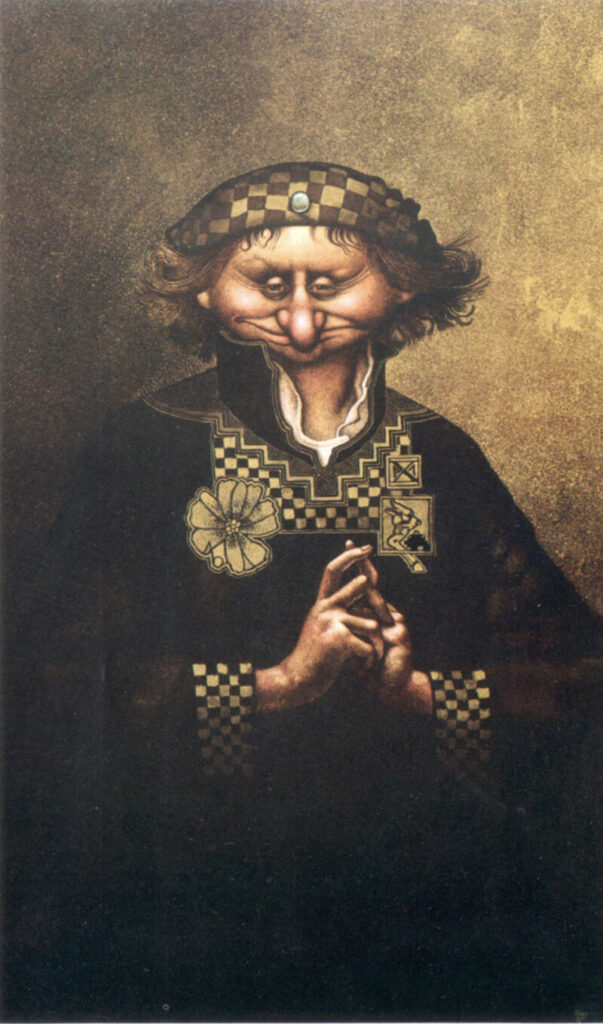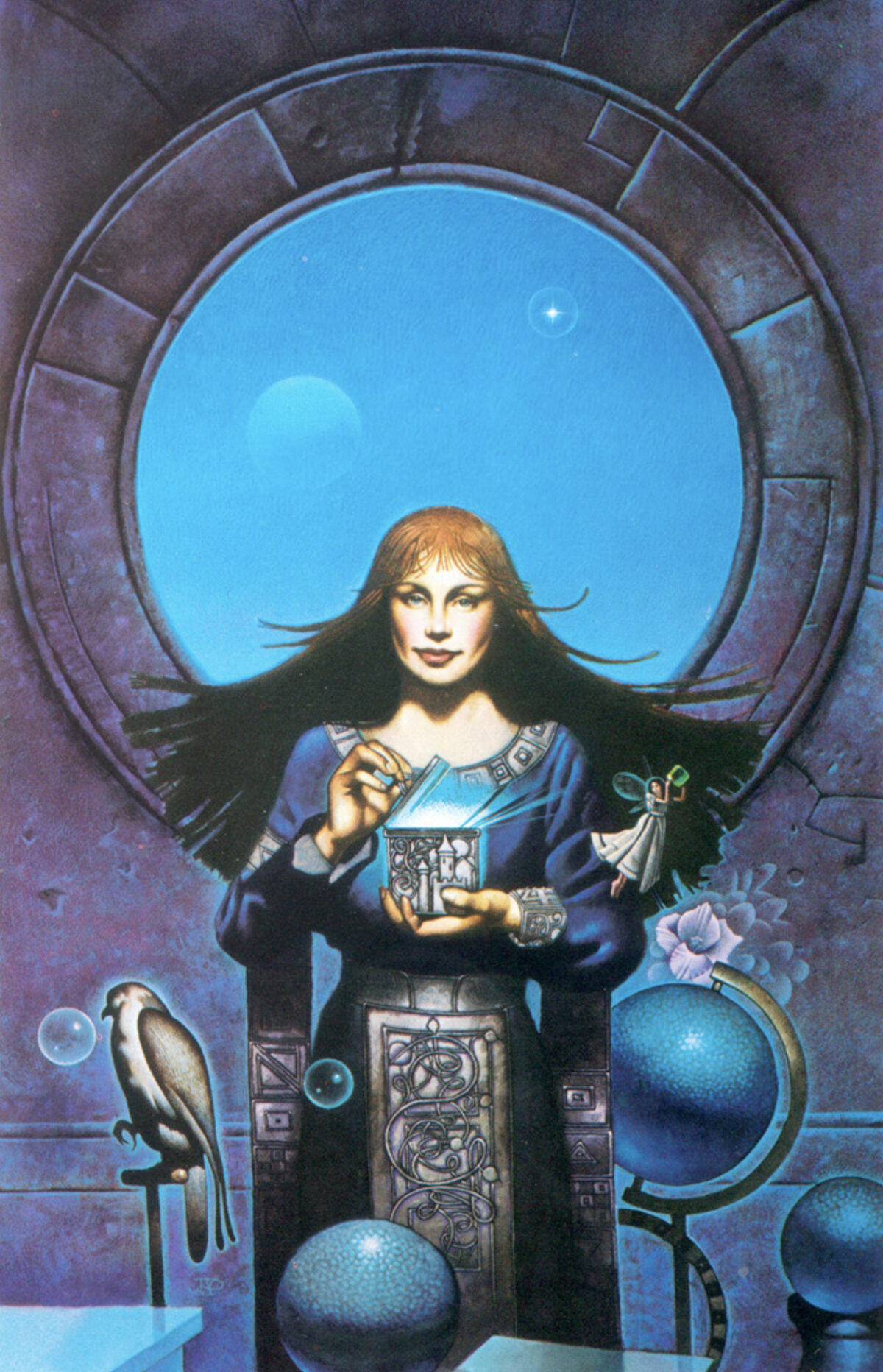Solve the puzzles and (maybe) win a precious jewel, but good luck–no one has succeeded for 40+ years
In 1982, just a few years after the children’s book “Masquerade” kicked off the first “armchair treasure hunt,” Byron Preiss released his own challenge to the treasurially-inclined: find twelve buried “casques” following the clues in his puzzle book “The Secret.”
Like “Masquerade,” the story of “The Secret” is accompanied by mysterious paintings and verses meant to show the exact locations of the casques. The majority of these treasure chests remain undiscovered four decades later despite the dogged efforts of puzzle-solvers around the world. The hidden casques still spark excitement and speculation and–sometimes–unauthorized midnight shoveling in parks and public squares around North America.
Each casque is contained in a lucite cover and is buried between 1.5-3.5 feet deep. The treasure itself is not in the casque, but a key inside can be exchanged for a precious gem once the find is confirmed.
The rules indicate that there are no casques buried in cemeteries, flower beds, or near power vaults, and that treasure seekers should ask permission before digging (San Francisco requires a permit and the presence of an official “Treasure Ranger” during any exploratory digs in the city’s parks).
This complicated puzzle has many layers. The first challenge was determining which cities the paintings were pointing to. Next, each painting needed to be matched with a verse that revealed the exact location of the hidden casque.
The paintings contain subtle clues indicating a time, month, birthstone–the gem intended to be the reward for that particular find–as well as many disguised features and symbols of the target city. Websites like 12treasures.com show “accepted” linkages between the paintings and their cities; John Jude Palencar, the artist who created the paintings, has confirmed that the current correlations between the cities and paintings are correct, though the pairings with the verses are not as certain.
That’s all the official confirmation concerning the clues one is likely to get. Preiss died in a car wreck in 2005 and, though he claimed he had a record of the exact burial sites, it seems he did not. Preiss gave Palencar reference photos of various landmarks to incorporate into the paintings, but no photos of the actual burial sites.
It’s also unclear whether or how long the original prize terms of “The Secret” will be upheld. John Jude Palencar/stated in 2014 that the rights to the book were sold in a bankruptcy; the new IP/rights owners later reprinted the book and said they would honor the contest (they did bestow a gem on the finder of the Boston casque in 2019) but they claim they do not know the locations of the casques and cannot provide clues. Palencar and Preiss’ widow have bowed out of answering questions about “The Secret” and no longer wish to discuss it.
All that said, and understanding that all effort expended may be for bragging-rights only: one of these casques is hidden in Montréal, the only Canadian city so honored.
Are you ready to “dig in” and solve this vintage mystery? Then behold the painting for Montréal. Note the opal gemstone in the center of the checkered cap–that’s the gemstone you might win, if the contest is still active at time of discovery.

Did you notice how the right side of the man’s cap (or maybe his collar) might form a partial outline of the island of Montréal? Did you figure out how the weird dog-eating-deer-leg icon correlates to antique stanchions only found in a particular part of town near Mount Royal? Does the checkerboard pattern signify the Golden Square Mile neighborhood, or perhaps the finishing flags at the F-1 racetrack on Isle Ste-Hélène? Is the flower a rose-window in a landmark church, and what is that weird “67” or “76” superimposed on it–maybe a reference to sites built for the Expo 67 World’s Fair? Why is the face so asymmetrical and the nose so bulbous? What is that word scrawled on the wall to the right? Does the stair-stepped collar point to an architectural feature on a guide building, or perhaps literal stairs to the treasure site?
Here’s some detailed speculation/analysis about the possible clues. At first glance I’m partial to the F-1 theory, but this is a rabbit-hole I’ve yet to fully explore. But should I bother to put in the effort when it’s unlikely to yield any results? For as fun and exciting as the prospect of hidden treasure seems, the chances of finding anything are slim.
Since 1982, only three of the casques have been found–the most recent being the aforementioned 2019 find in Boston, which occurred during construction on a civic baseball field.
The 2019 find points at a rather sticky and complicating reality though: the burial sites and their critical architectural/geographical clues may not have aged well. It’s likely that at least some of the landmarks have changed significantly over the last 40 years; renovations, demolition, and new landscaping could make the sites impossible to find and prevent the retrieval of the casques. For example, some treasure hunters posit that the San Francisco casque is now sealed under an asphalt pathway that was widened to make the park more wheelchair-accessible. It’s anybody’s guess, but seems logical to conclude that other casques and clues may have met similar fates.
Despite the probable degradation of the casque sites, armchair treasure-hunters still eagerly discuss their theories on Reddit, Facebook, and various websites. If you have a go, let me know what you find. The psychology of it all is very interesting to me; it’s like a slow-release lottery ticket without the lifelong income.
There may be value still in working on this puzzle, gemstones or no. Communities have sprung up around discovery and discussion of “The Secret”; one treasure hunter who walked his city regularly to hunt for clues said he lost several pounds as a result. Even without a prize, it seems there’s worth in pursuing hidden treasures….at least you’ll be outside.

